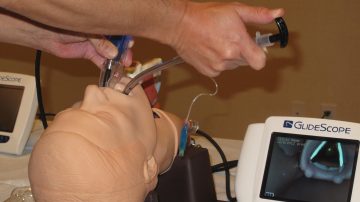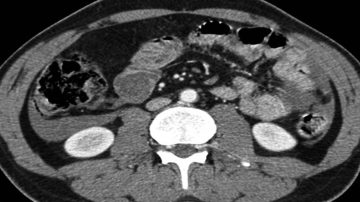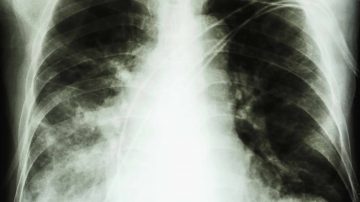A study was executed to decipher the best cut-off point for a positive Allen’s test. Ninety-three hands of 47 patients undergoing coronary artery bypass surgery were screened. The average age of the patients was 63.3 years. Independent observers examined these…
Read MoreTarget Audience: Emergency clinicians Background: A multidisciplinary group of emergency physicians, radiologists, cardiologists, and others has developed appropriateness criteria for the use of imaging to help inform clinicians for four clinical scenarios presenting as chest pain in the ED. Key…
Read MoreA prospective cohort single center study was conducted to analyze the risk associated with patients undergoing thoracentesis or small-bore chest tube placement while taking clopidogrel. Twenty-five patients taking clopidogrel gave consent to remain on the antiplatelet medication while undergoing thoracentesis…
Read MorePrior to the revised Swedish lumbar puncture guideline, a CT scan was often performed prior to lumbar puncture when acute bacterial meningitis was suspected. Taking the time to perform a CT scan of the head before lumbar puncture delays treatment…
Read MoreMore Articles – Arterial line, Cardiovascular diseases, Chest Tube, Emergency Procedures, Hematology, Medical General, medical procedures
These guidelines are for physicians who care for patients with return of spontaneous circulation (ROSC) after cardiac arrest, including emergency physicians, critical care physicians, and cardiologists These guidelines update the 2010 International Liaison Committee on Resuscitation guidelines for patients with…
Read MoreA systematic review found no significant missed injuries in obtunded blunt trauma patients who had normal CT imaging of their cervical spines. Given the significant morbidity and mortality associated with missed traumatic cervical spine injuries, patients in whom a reliable…
Read MoreMore Articles – Arterial line, Cardiovascular diseases, Central line, Infections, medical procedures
Arterial line-associated bloodstream infections occur at rate of 0.9-3.4 infections per thousand catheter-days. This rate of infections is similar to the risk of central line-associated bloodstream infections (CLABSIs). The CDC guidelines for arterial line placement recommend the use of chlorhexidine…
Read MoreThe goal of zero device-related infections is what CMS desires for all hospitals, but is not a realistic goal. Nevertheless, we can do everything in our power to minimize central line-associated bloodstream infections (CLABSIs). We now can appreciate that the…
Read MoreThe ACP CPG on the evaluation of patients with a suspected acute PE has the following primary recommendations: Use a validated clinical prediction rule to estimate pretest probability in patients with a possible acute PE (options include the Wells criteria…
Read MoreIn a study conducted at two academic medical centers, records showed that of 71,570 intubations 2,004 used Glidescope for airway management. Success rates and complications were documented in these Glidescope intubations. The overall success rate for Glidescope intubations was 97%.…
Read MoreA recent meta-analysis and systematic review of 13 randomized, placebo-controlled trials analyzed over 2000 patients hospitalized for CAP. The analysis examined whether the addition of systemic corticosteroids doses (20–60 mg of prednisone or steroid equivalent) to empiric antibiotics was any better than…
Read MoreAlthough adult bacterial meningitis (ABM) is rare, the outcomes can be devastating. An area of controversy concerns when to perform lumbar puncture (LP). Because of the possibility of brain herniation, it has been recommended that cerebral computed tomography (CT) be…
Read MoreResearchers evaluated 17,239 patients (77% older than 60; 31% tobacco users) with COPD exacerbations who were admitted to ICUs at 473 U.S. hospitals. Nearly one third of patients received noninvasive ventilation; 15% were intubated. Almost all patients received antibiotics and…
Read MoreIn an open-label trial involving adults with complicated intra-abdominal infections at 23 centers in the U.S. and Canada, researchers have investigated whether fixed-duration antimicrobial therapy (4 days) after source control is as effective as the traditional strategy (antibiotic administration until 2 days…
Read MoreLung ultrasound can detect pneumothorax and pulmonary edema, but limited data exist to quantify its accuracy for diagnosing pneumonia. In a prospective study, investigators compared lung ultrasound to chest computed tomography (CT) and chest x-ray among adult patients presenting with…
Read MoreCategories
- ACLS (1)
- Arterial line (33)
- Cardiovascular diseases (77)
- Central line (55)
- Chest Tube (39)
- Dermatology (4)
- Emergency Procedures (139)
- Endocrinology (6)
- Endotracheal Intubation (36)
- Events (24)
- FAST Exam (12)
- Featured (113)
- Featured Procedure (42)
- Gastrointestinal diseases (32)
- Ginecology (3)
- Glidescope Intubation (21)
- Hematology (33)
- Hospital Procedures (85)
- Infections (32)
- Intraosseous line (8)
- King Tube (27)
- Laryngeal Mask Airway (18)
- Lumbar Puncture (36)
- Mechanical Ventilation (34)
- Medical General (95)
- medical procedures (258)
- Needle Decompression (6)
- Nephrology (11)
- Neurological diseases (12)
- Oncology (4)
- Paracentesis (32)
- Pericardiocentesis (3)
- Procedural Sedation (19)
- Respiratory diseases (85)
- RUSH Exam (8)
- Thoracentesis (37)
- Traumatology (24)
- Travel (27)
- Ultrasound-Guided Peripheral IV (13)















